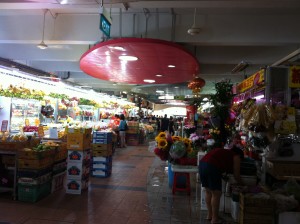
Shopper Behavior around the world is rapidly changing and yet, even in the world’s most developed economies, shoppers continue to use traditional markets. Why is this and what can be learnt from this to improve more
Going to the market: a consistent shopper behavior everywhere
From Bangkok’s wet markets, to LA’s farmers markets, traditional market places have endured the rise of the supermarket, the advent of the hypermarket and even the onslaught of internet shopping. In Hong Kong for instance nearly 80% of fresh foods are bought in markets, despite the presence of a sophisticated and highly consolidated supermarket sector. In Europe, market day continues to draw people into the center of towns on a weekly basis. And here in Singapore, as a family we prefer to shop at our local market instead of battling through crowded, poorly stocked and over-priced supermarket alternatives. It appears that all around the world, many shoppers love their markets.
Why going to the market is an important part of shopper behavior
Traditional markets suit many shoppers because they meet a three common needs that more ‘modern’ retail environments struggle to satisfy:
The need for “Curation”
Stall holders are curators of product: in most cases the product is bought by the holder themselves. Because stall holders’ livelihoods depend on repeat business, they have a greater duty of care in product selection. As a result, shoppers often find that market stall operators know more about the products they sell and are able to direct shoppers’ in their choices.
The need for “Personalization”
Most of us enjoy great customer service and that only really comes from being recognized. For me, recognition is more than just knowing my name though, its about knowing my family, understanding our values and helping us achieve our goals. This is pretty difficult to achieve if you are a major corporation. But the stall holders we buy from know us; they know our preferences and they know why we want certain things when we visit because we talk to each other. As a result the service we get is highly personalized.
The need for “Scarcity”
It seems ironic to suggest that we prize scarcity as shoppers when one of the problems shoppers in big stores complain about most is out-of-stocks. And yet we seem to enjoy the experience of being one of the few who are able to get the freshest products in the morning. For this reason markets are often busiest the second they open as shoppers rush to get the best stuff.
Shopper needs drive shopper behavior
In our book, “The Shopper Marketing Revolution“, Mike Anthony and I explain how shoppers’ needs drive outlet choice and therefore have a massive influence over the final product that people buy. Traditional markets satisfy more than just the humdrum needs of “great products at low prices” (here in Singapore it’s actually considerably cheaper to buy great fresh foods in a market than in the country’s badly managed chain stores). They deliver on an emotional level too, drawing loyal shoppers back time after time even if they might not offer all the conveniences of a super-store.
Many retailers have sought to emulate the environment of a traditional market and whilst some have succeeded, many have failed. In the main, these retailers have failed to recognize that a market is not just a physical environment, it’s also an emotional one. Real-world retailers will benefit from investing more in service standards, product selection and communication if they wish to maintain relationships with shoppers. This is especially online retailers potentially have an advantage – its far easier to curate and personalize if you have a sophisticated algorithm to support you. The challenge online however is to make the relationship with shoppers more real, as Zappos.com was able to as it broke open the shoe retail market.
Brands have a different challenge: how to ensure that you understand your shoppers’s needs and that your products are in the outlets shoppers’ choose. An in-depth understanding of shopper behavior helps marketers choose where to site their products and to secure the best execution. Understanding the shopper behavior that drives channel choice is therefore a critical input into defining which retail channels to prioritize.
If you’d like to know more about channels, Mike and I have just published a new ebook on the subject along with our colleagues at engage. You can download a copy here for free!